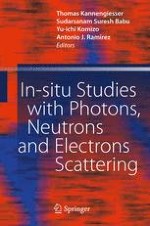2010 | OriginalPaper | Buchkapitel
In Situ Studies of Phase Transformation and Residual Stresses in LTT Alloys During Welding Using Synchrotron Radiation
verfasst von : Arne Kromm, Thomas Kannengiesser, Jens Gibmeier
Erschienen in: In-situ Studies with Photons, Neutrons and Electrons Scattering
Verlag: Springer Berlin Heidelberg
Aktivieren Sie unsere intelligente Suche, um passende Fachinhalte oder Patente zu finden.
Wählen Sie Textabschnitte aus um mit Künstlicher Intelligenz passenden Patente zu finden. powered by
Markieren Sie Textabschnitte, um KI-gestützt weitere passende Inhalte zu finden. powered by
